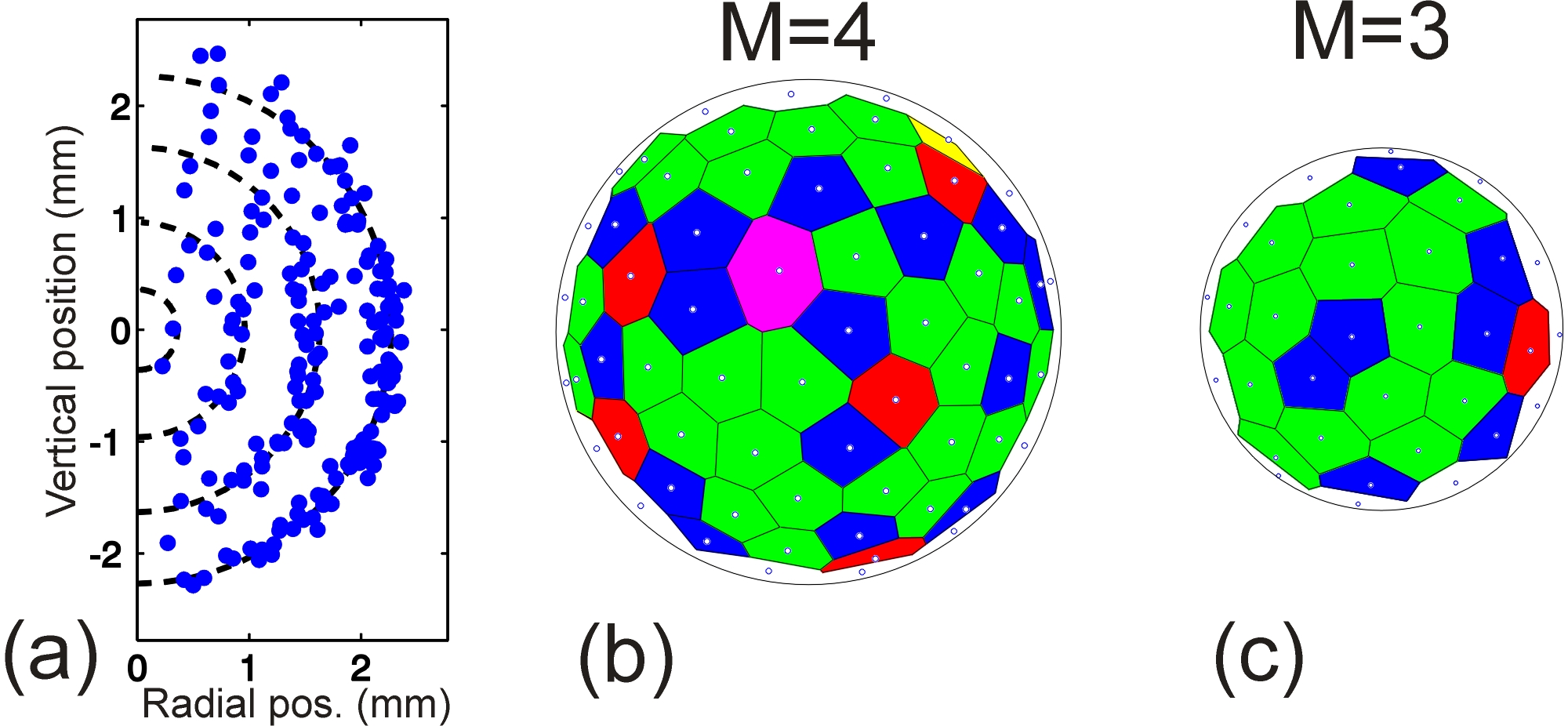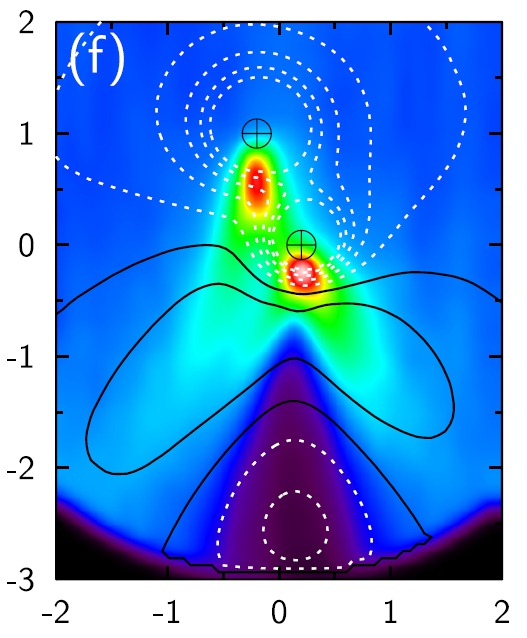
Since the 1980s, a new branch of plasma physics has emerged - the study of dusty plasmas. Because of similarities with complex fluids, dusty plasmas are also known as complex plasmas. This field has roots in astrophysics and became interesting for laboratory plasma research when dust formation and dust trapping was observed during plasma etching of silicon.
Dusty plasmas contain, among electrons and atomic or molecular ions, microscopic particles with sizes ranging from some ten nanometers to several ten micrometers. The dust particles become electrically charged and interact with the other plasma constituents. When the density of dust particles is sufficiently high, the electrostatic interparticle forces become important. The dust subsystem can develop collective behavior, which manifests itself as wave phenomena or, for micrometer particles carrying several thousand elementary charges, by the formation of liquid or solid phases.
(a) The microparticles arrange themselves in individual shells. (b,c) Inside a shell, the microparticles (circles) inhabit hexagonal (green) and pentagonal (blue) neighborhoods [from: Arp et al, Phys. Rev. Lett. 93, 165004 (2004) DOI].
The discovery of plasma crystallization, in 1994, by three independent groups, gave a strong boost to the field of dusty plasmas. For dusty plasmas with micrometer sized particles, the motion of all individual particles can be followed by fast video-cameras. This is a unique opportunity to study the collective behavior of an ensemble of charged particles at the kinetic level. In 2004, our group succeeded in creating three-dimensional spherical plasma crystals.


